


Vietnam's Logistics Industry - From Historical Value to the Era of National Growth
- 1. The painting "The Vân Đồn Trading Port" - The beginning of seaport, illuminating the Nation's aspirations
- 2. The painting “The Lady of the Storehouse”
- 3. The painting “The Hội An Commercial Port - Faifo” - Where cultures connect
- 4. The painting “The Vĩnh Tế Canal” - A Masterpiece of a Forward-thinking mind
- 5. The painting “The epic song of the Supply Chain” - Historical Heroism logistics Symbol.
- 6. The painting “The Ho Chi Minh Trail" - The Path of Victory
According to conclusions drawn at the seminar “The New Era of National Development in Vietnam: Theoretical and Practical Issues”, one of Vietnam’s foremost priorities is to ignite national pride and patriotism, fostering self-reliance, confidence, resilience, and a collective aspiration for development. The nation aims to integrate its inherent strengths with global advancements to achieve strategic goals by 2030, including becoming a modern industrialized developing country.
The logistics sector, pivotal to Vietnam’s economic growth and integration, has journeyed through significant historical milestones, evolving alongside the nation’s progress. In alignment with the spirit of reigniting national pride in this new era, InterLOG, a pioneer in creating innovative supply chain solutions and comprehensive logistics services, has collaborated with oil painting artists to introduce the collection “The Legacy of Vietnam’s Logistics Industry”. This series portrays significant milestones throughout Vietnam’s history, celebrating the enduring strength, aspirations, and resilience of the Vietnamese people.
From the legendary trade hub of Hội An and the ancient Vân Đồn Port to the world-renowned “Dien Bien Phu Campaign” and the historic “Ho Chi Minh Trail” during the resistance wars, each moment underscores the critical role logistics has played in shaping Vietnam’s past and future. Together with InterLOG, let us reflect on and express gratitude to the pioneers who paved the way for Vietnam’s logistics development and the nation’s broader journey toward global prominence.
1. The painting "The Vân Đồn Trading Port" - The beginning of seaport, illuminating the Nation's aspirations
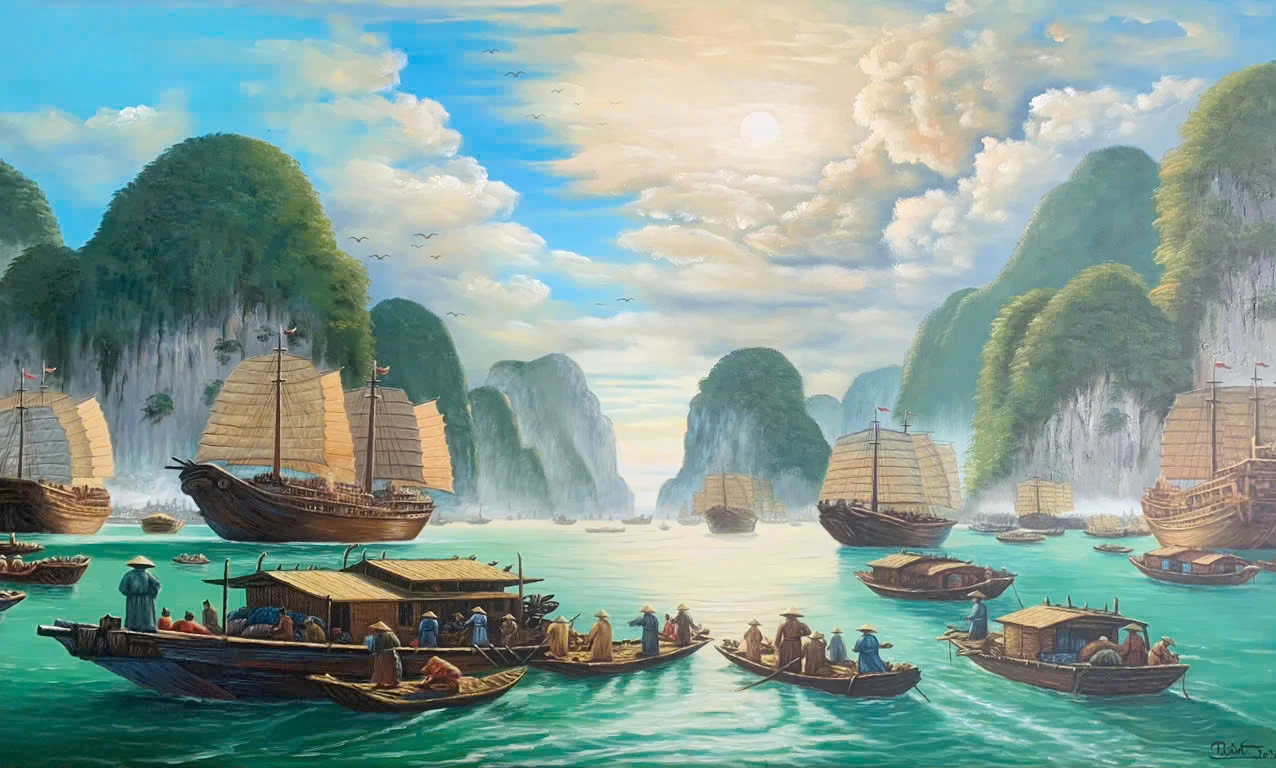
The painting "Vân Đồn Trading Port" commemorates one of Vietnam's oldest and most significant seaports, established in 1149 during the Lý Dynasty. Strategically located in Bái Tử Long Bay, Quảng Ninh, Vân Đồn thrived as a bustling trade hub connecting Vietnam with China, Japan and Southeast Asia, while also serving as a vital shield for the northeastern seas.
Beyond its commercial role, Vân Đồn held great defensive importance, most notably during the Battle of Bạch Đằng in 1288. Under the command of Trần Hưng Đạo, the Đại Việt people triumphed over the Mongol-Yuan invaders, embodying the nation's unwavering resolve to protect its sovereignty.
In the end, this painting celebrates Vân Đồn as both a symbol of international trade and a testament to Vietnam's enduring aspirations and commitment to safeguarding its homeland.
2. The painting “The Lady of the Storehouse”
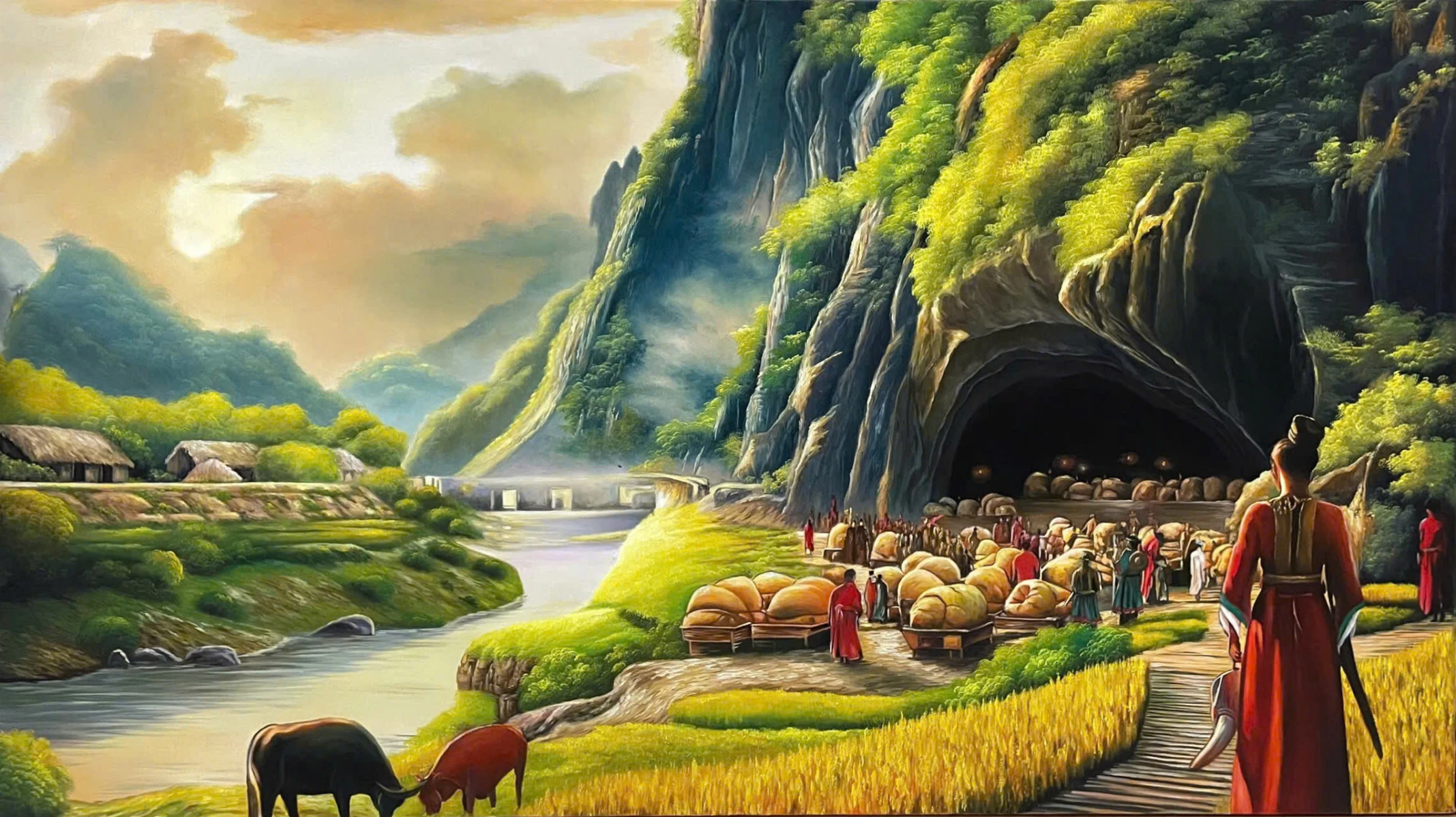
The painting portrays Storehouse Lady, a historical character of Vietnam from the Lý Dynasty in the 11th century, revered for her role in managing the national granaries during periods before and after wars of resistance against foreign invasions. She organized production, harvesting, and storage of food, ensuring an efficient supply chain that supported both the population and military strategy. The artwork honors her contributions to protecting the country while highlighting the cultural and historical importance of resource management.
The depiction of grain storage and the transportation of agricultural goods in the painting serves as evidence of the early development of logistics systems. Storehouse Lady has become a symbol of effective planning and resource management—the foundation of modern logistics. The painting not only conveys lessons on storage and distribution strategies but also demonstrates the link between supply chain management and societal prosperity, both in times of peace and war.
3. The painting “The Hội An Commercial Port - Faifo” - Where cultures connect
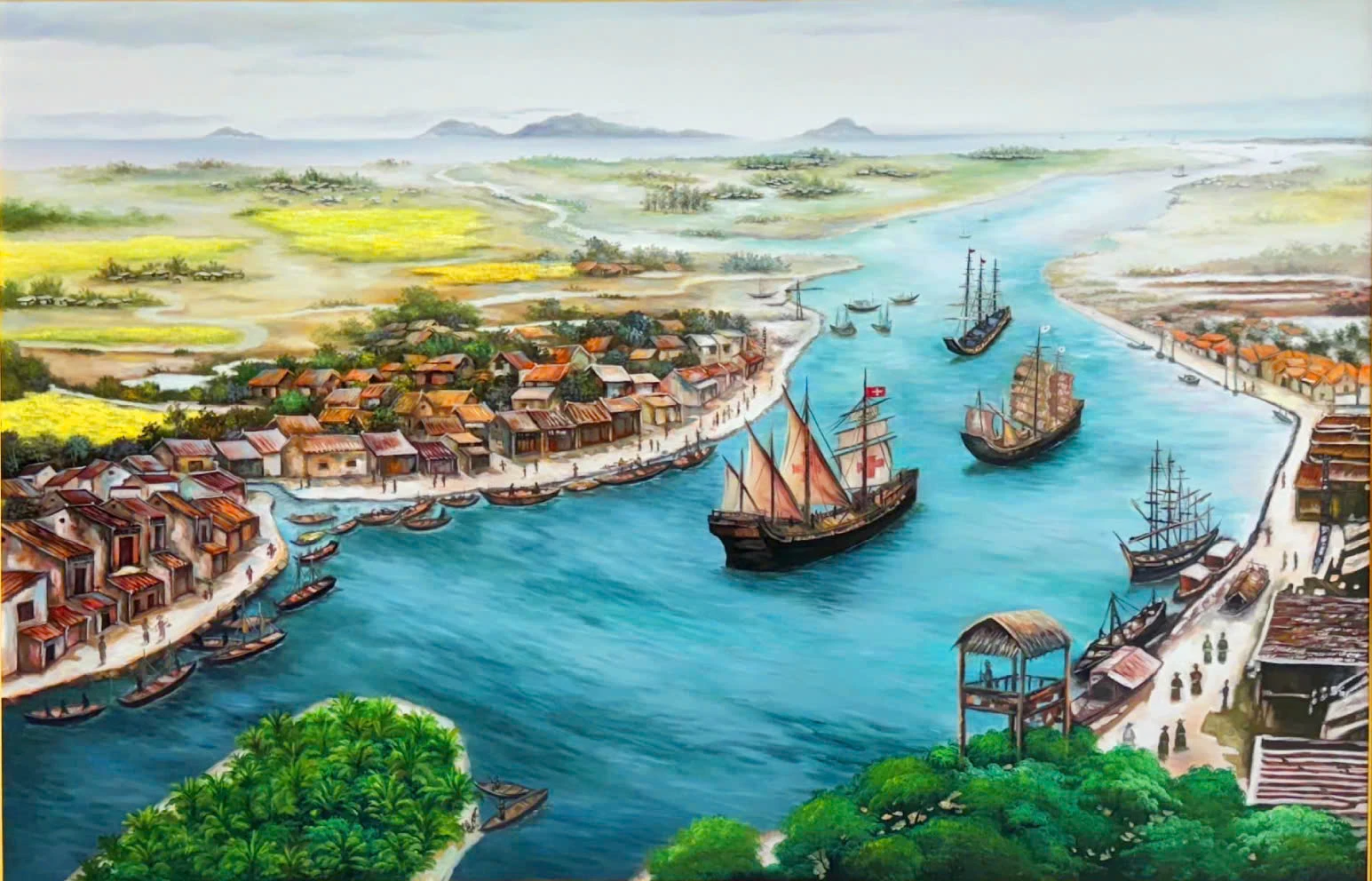
The painting “Hội An Commercial Port” recreates the bustling image of Faifo Port, a symbol of Vietnam's international trade during the 17th and 18th centuries. With its strategic location and abundant goods, Hội An became a trading hub of Southeast Asia, attracting merchants from Japan, China, Portugal, and Western nations for trade and international commerce. Under the leadership of the Nguyễn lords, the port welcomed diverse cultures, fostering a unique blend of traditions and leveraging foreign trade to strengthen national power.
Although Hội An declined from the late 18th century due to wars and a shift in trade routes to Đà Nẵng, Faifo remains a significant reminder of the vital role of transportation and logistics—key sectors in the economic growth of any nation. The painting serves as a poignant reminder of the enduring value and immense potential of maritime trade, connecting nations on the path of international exchange and cooperation.
4. The painting “The Vĩnh Tế Canal” - A Masterpiece of a Forward-thinking mind
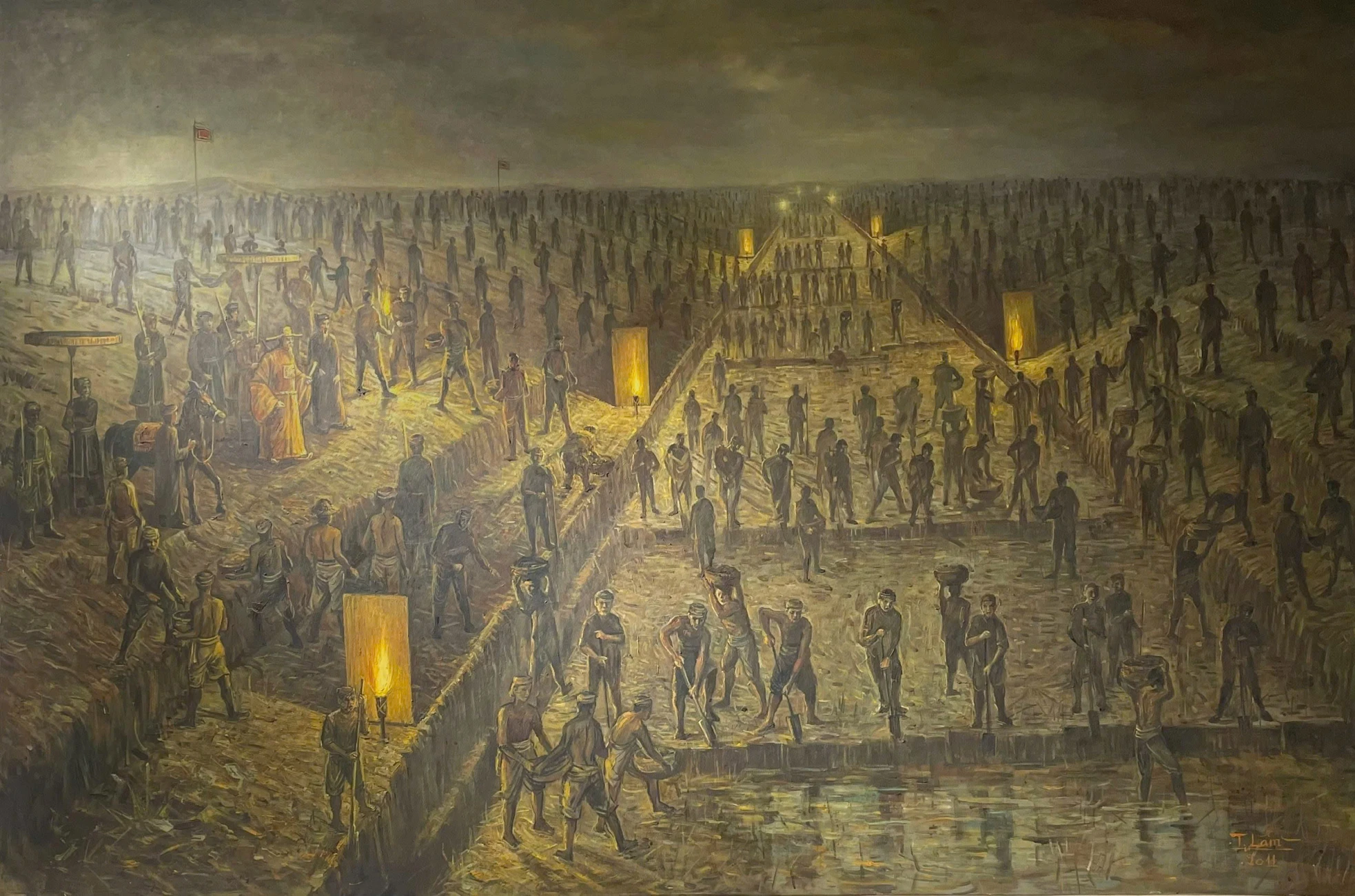
The painting "Vĩnh Tế Canal" by artist Trần Ngọc Lâm vividly portrays the tireless laborers, diligently digging the canal under the leadership of the distinguished official Thoại Ngọc Hầu.
Thoại Ngọc Hầu (1761–1829), or Nguyễn Văn Thoại, was a prominent general in Vietnamese history. He was a noble and wise statesman, standing tall with a commanding presence. He demonstrated respect and support for the workers while symbolizing wisdom and authority. Thoại Ngọc Hầu is also considered the founding figure of Vietnam’s logistics sector, with his significant contributions to the development of irrigation systems and fostering diplomatic relations in the Mekong Delta region.
Through this, the artwork conveys a message of dedication, teamwork, and the value of #Innovation - highlighting the creativity, growth and contribution of ordinary workers. It paints a vibrant image of ambition and perseverance, overcoming challenges to build and sustain a thriving community.
5. The painting “The epic song of the Supply Chain” - Historical Heroism logistics Symbol.
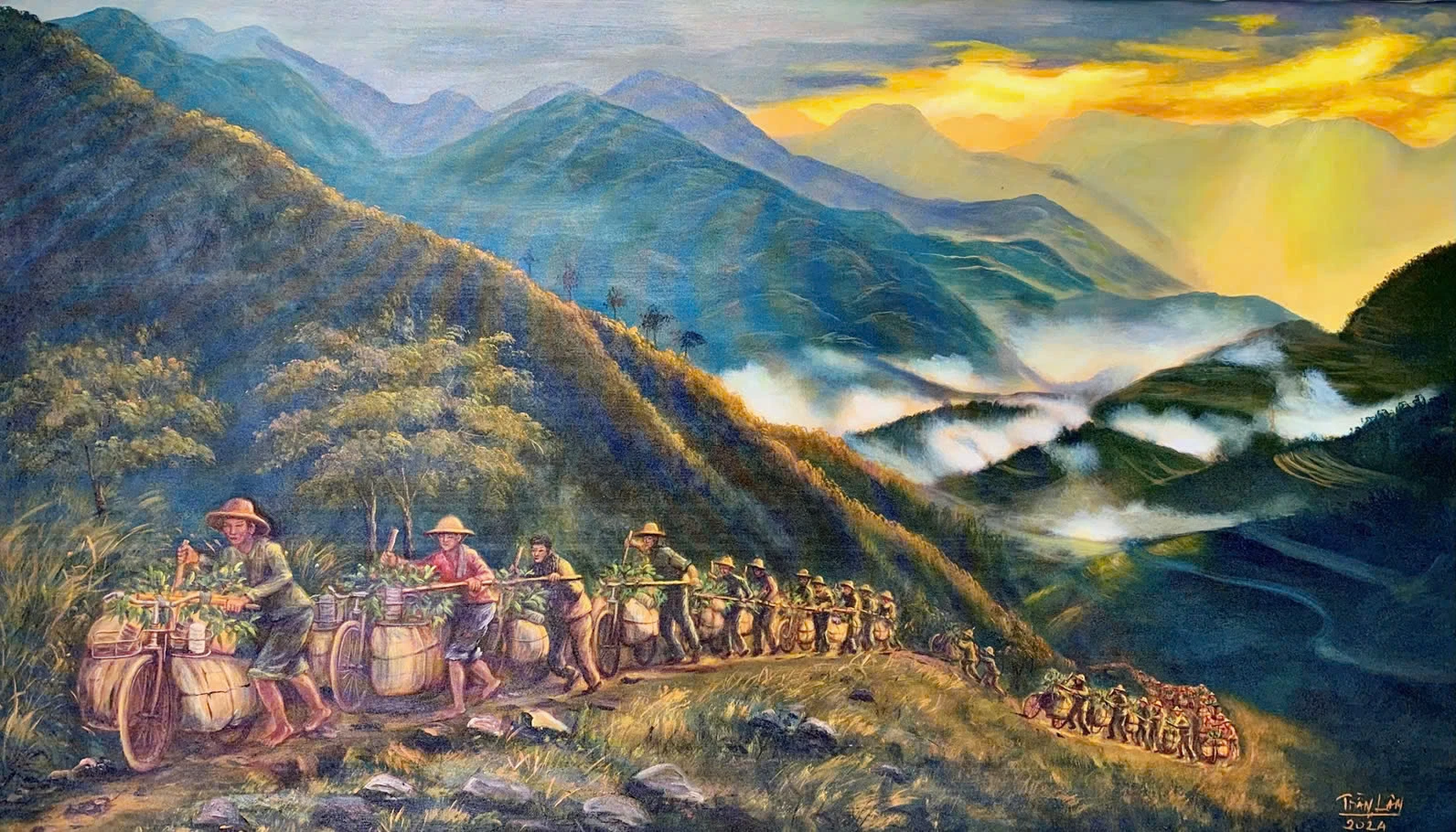
The painting “The epic song of the Supply Chain” magnificently recreates a heroic chapter in the Vietnamese transportation industry during the resistance war,when the entire nation united for the Điện Biên Phủ campaign. The artwork captures the tireless efforts of people transporting supplies on foot through the treacherous Phadin Pass at dawn, guiding bicycles laden with up to 250 kilograms of provisions - five times the usual load capacity. The silent procession of bicycles climbing the steep slope bore not only food supplies but also the indomitable spirit and unwavering determination to defend the homeland.
This scene stands as a powerful symbol of unity and resilience, celebrating the grandeur of a manually operated supply chain during a storied period of history. It inspires profound admiration for the perseverance, sacrifice, and continuity that paved the way for Vietnam’s “radiant dawn”.
6. The painting “The Ho Chi Minh Trail" - The Path of Victory
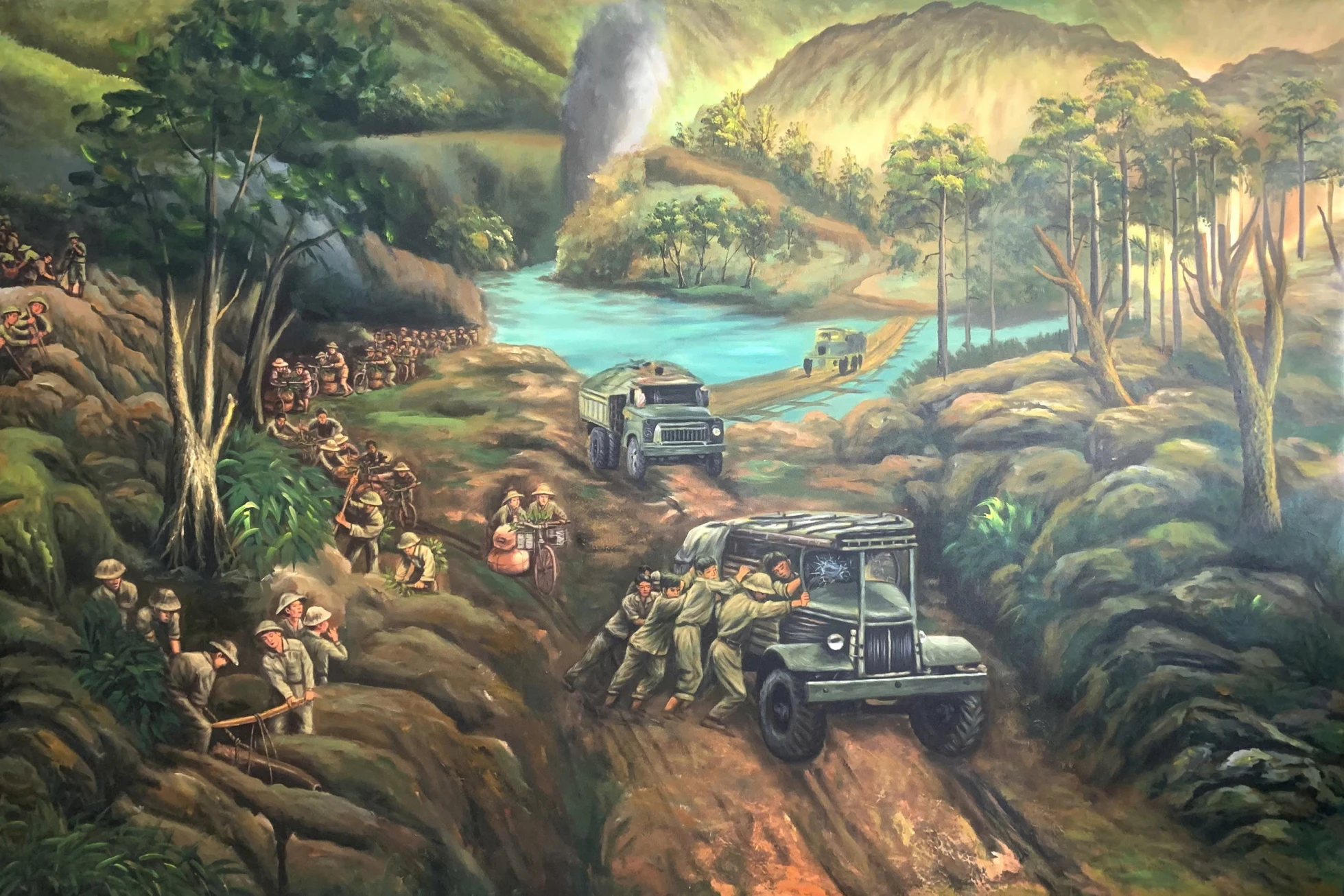
In the history of Vietnam, the Ho Chi Minh Trail, also known as the Truong Son Trail, stands as a monumental achievement, both in concept and execution. Initially carved out from simple paths along the Truong Son Mountain Range, it gradually expanded into a strategic transportation network spanning nearly 20,000 kilometers of roads, waterways and pipelines. This was a trail of creativity, innovation and continuous growing, transporting millions of tons of weapons, supplies and troops to the southern battlefields, playing a decisive role in the nation’s fight for liberation.
After the war, the Ho Chi Minh Trail retained its timeless significance. Transitioning from a wartime supply route, it was modernized and transformed into the Ho Chi Minh Highway in the era of industrialization, symbolizing the nation’s aspirations for progress and growth. As poet Tố Hữu - a famous poet in history and also a Vietnamese politician, aptly envisioned:
"Widen the legendary Ho Chi Minh Trail,
So our nation may stand at the forefront of humanity".
Looking back at history through the fragments of time, we take pride in the remarkable journey of Vietnam’s logistics industry. It is not merely a story of an industry’s growth but a symbol of the nation’s indomitable spirit, creativity, and unwavering determination to rise. The valuable lessons from the past continue to inspire us to partner with InterLOG in preserving traditional values while striving for a sustainable future. With relentless effort, we are committed to strengthening Vietnam’s logistics sector, elevating the country’s position on the global trade map.
We also extend our heartfelt gratitude to artists Trần Lâm and Đăng Chân for their extraordinary contributions in creating these heroic and artistically significant oil paintings.


